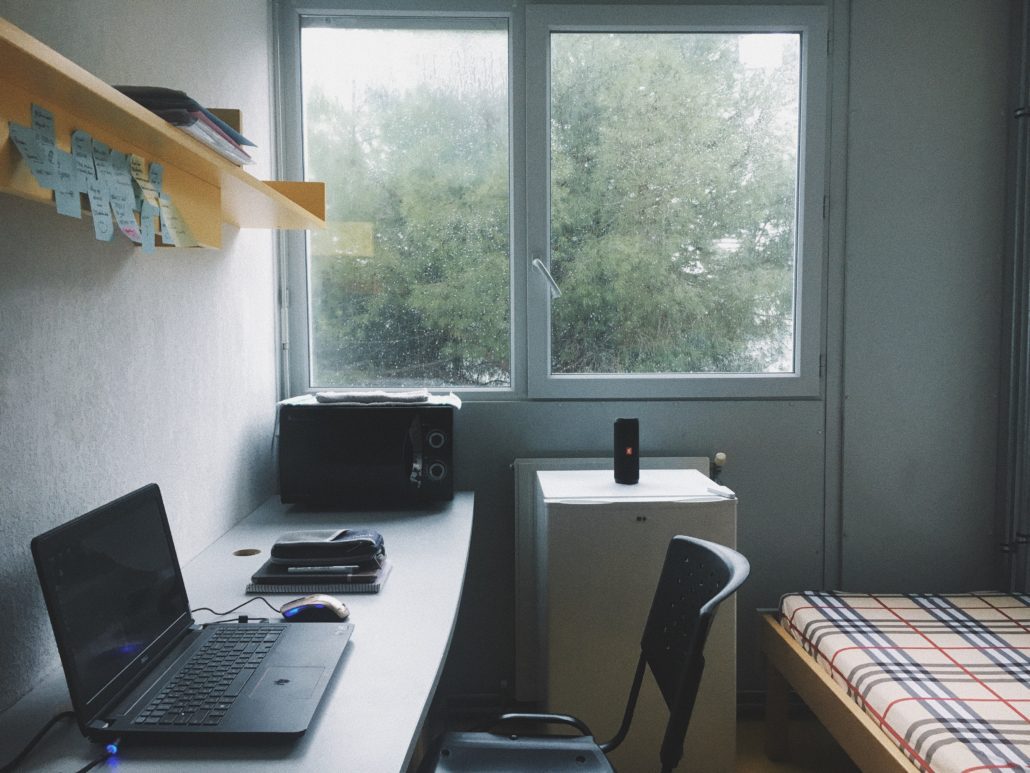Dorm Room Survival: Avoiding Bed Bugs at All Costs

Your new bedding and laptop is purchased and you’re slowly packing through your belongings, anxiously counting down the days until you begin the next chapter of your life: college. It’s what you’ve been preparing for for years, but as the anticipation builds, you might be feeling apprehensive. After all, life as you know it is about to change. You’re about to embark on an amazing learning experience, both inside and outside the classroom, but you’re not quite sure if you’re prepared. What could you possibly be forgetting?
If you’re like most college students and their parents, it didn’t even cross your mind that college dorms can be a breeding ground for pests – bed bugs in particular. The truth is, unless they’ve dealt with a bed bug issue in the past, the majority of the public doesn’t think about these critters, or take the necessary precautions to prevent them. But college dorms allow the perfect conditions for bed bugs to thrive, and more than half of pest control professionals have dealt with bed bug infestations in college dorms.
It’s likely you won’t suffer from a bed bug invasion, but infestations have been on the rise over the past few years, so we want to help you prevent these pests from overtaking your dorm room and your life.
What are bed bugs?
Bed Bugs are tiny insects that live in cracks and crevices that are close to a human environment. They can also be found living in fabric, upholstery, and typically in mattresses, couches, or other pieces of furniture. They can be transferred from room to room (and beyond) on backpacks and even clothing, making it easy for you to bring them into your home or dorm room without even noticing. Since they can be transferred on fabric, your dresser is also a possible hiding spot. They feed on human blood and the first sign of bed bugs is often bites on the body. Their bites can take anywhere from a couple of hours – or up to two weeks to show up.
What precautions can you take?
Inspect everything.
Before you bring anything into your room, check all of the furniture and your baseboards for signs of bed bugs. Be sure to check the mattress and couch cushion seams, dresser corners, and your bed frame, especially if it is made of wood. If your bed has a headboard, check behind it too. Use a flashlight to look into the cracks and crevices. If you see any signs of bed bugs, don’t move your belongings in yet and tell your Residence Assistant (RA) right away!
Spray you room with EcoRaider Bed Bug Killer.
Whether you see any signs of bed bugs or not, it’s important to spray a non-toxic bed bug killer, like EcoRaider (link to product page), on your furniture before moving in. This will kill any bed bugs that are present, even if you can’t see them, and will prevent them from making your room into their home. Spray your mattress and couch, especially the seams, and then coat your dresser, desk, and baseboards. We recommend you let it dry before putting sheets on your bed or clothes in your dresser, but it’s safe on your skin either way. The spray has residual effects for fourteen days, so we recommend spraying your room every other week.
Keep your room clean and your clothes in sealed plastic bags or bins.
Eliminating clutter gives bed bugs fewer places to hide in your room. By keeping your space tidy and belongings off of the floor, you reduce the likelihood of bed bug transfer and have a greater chance of noticing an infestation early on. If you are able, keeping your clothing in sealed plastic bags will keep bed bugs out too.
What to do if you find bed bugs:
Tell your RA.
If you find bed bugs in your dorm room at any time, tell your RA immediately so that the university can get started on notifying residents and working on a pest control process. Bed bugs travel and reproduce quickly, so waiting even one day could greatly impact your neighbors.
Spray your room with EcoRaider Bed Bug Killer.
The sooner you are able to spray your mattress and furniture, the better. Use the same instructions as above, but be sure you allow the product to dry. In the meantime, wash your bedding and clothing.
Wash clothes and bedding in hot water, dry on highest cycle.
The easiest way to kill bed bugs and their larvae on your clothing is to wash everything, even clothes that haven’t been worn, on the hottest setting. This is particularly important for all of your bedding, and don’t forget about towels and fabric shoes. If care label allows, tumble dry all bedding, linens, mattress covers and clothing on the highest temperature (140 °F) for at least 30 minutes. This will kill bed bugs in all stages. If you can, we also recommend keeping your clothing in sealed plastic bags until the infestation is under control.
Have you ever suffered from a bed bug infestation before? If so, what steps did you take to eradicate the population?





